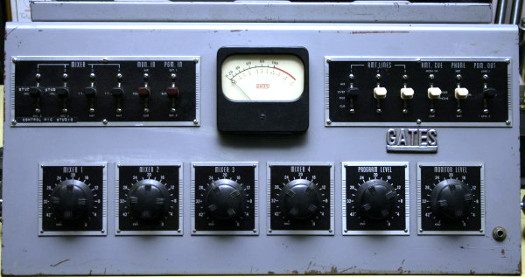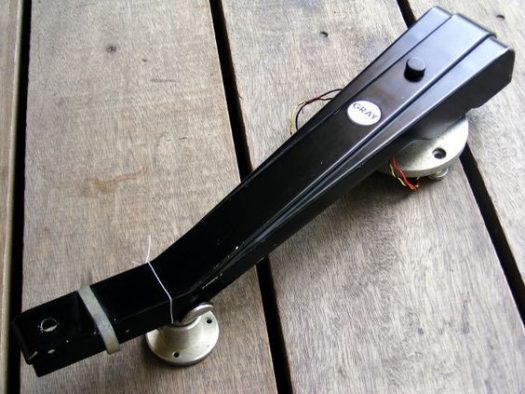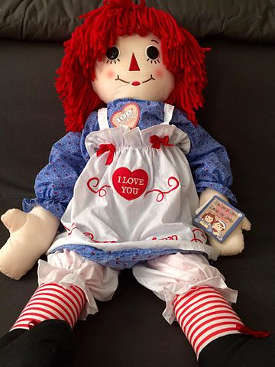In this trip down memory lane, we look back to the days when cutting edge technology came with vacuum tubes.
Days of Future Tech Passed

The first broadcast of FM stereo in North Carolina was on WMDE, an FM-only radio station in Greensboro. I’m guessing that the time was late 1961 or early 1962, as the FCC approved FM stereo broabdasts in April, 1961. Dad ordered the stereo generator as soon as they became available. I was there the night it was installed. I would have been 10 at the time.
The station was no more than a control room and transmitter room, that had been built by my father and one of his friends in the corner of a brick building that had been some sort of garage, but which my father had turned into a television repair shop when he bought the building in the early 1950s. In the control room, the walls and ceiling from about waist high were covered with white acoustic tiles, made of compressed fiber, with holes to absorb sound. The bottom half of the walls were plywood painted light lime green, with a strip of molding running along the seam at the bottom of the tiles. Like nearly all control rooms, there was no outside window.
The console desk, also built by Dad, was a backwards “C,” built deep and sat against the transmitter room wall. The console was a small Gates Studioette, bought new in 1956, which could mix from four sources. To expand its mixing capabilities, there were switches that the operator could use to take audio from additional sources and assign them a pot. It was a Gates, so it was well designed and built. Rek-O-Kut Rondine turntables with Gray hydrolic tone arms sat on each side of the operator.

Our tape machine was a single track mono, 7 1/2 IPS Ampex 601, not rack mounted but portable, in a leather carrying case. It sat where the operator could easily reach it to change tapes or fast forward to the the next commercial while a record was being played. There were no cart machines at the station. They hadn’t been available in 1957 when the station went on the air, even though all the other stations in town were using them now. We didn’t need them. They were for AM stations with heavy commercial loads. What commercials we had, we did live, or else we recorded them and played them back on the reel to reel. We spliced five seconds of white leader tape between each commercial to make them easy to find.
When sitting at the board, the announcer was in front of a double paned plate glass window that was behind the console and afforded a view of the transmitter room. It was considered necessary back then to be able to see transmitters, as they dealt with a considerable amount of high voltage flowing through vacuum tubes. Sometimes the first indication that something might be seriously wrong with the transmitter came from the coloration of the final tubes, which passed all of the station’s power through to the tranmission line, which delivered the signal to the antennae system. Our late ’40s model REL transmitter was designed with windows on both the final stage and the exciter for watching the glow of the tubes, which put off enough light to enable meter readings without using the overheads.
Along the back wall of the control room was a couch that had been put in for my benefit. Starting at about the time I turned 10, Dad would let me stay at the station, even on school nights, until we signed off at 11. The couch was so I’d have a place to catch some sleep, as 11 o’clock — midnight by the time we got home — was technically past my bedtime. Dad was never strict about making me sleep, however. I slept well in the control room. Not only did I consider it home, the pop music of the day — Frank, Perry Como, the Mills Brothers, Joni James and the like — was good sleeping music.
I don’t know what the rules are anymore, or even if there are any, but in those days any scheduled transmitter maintenance that would require the carrier to be on with no programming had to be done after 2 a.m., so sometimes Dad would wake me up to take me to the station to help him work. This was the case on the night we installed the stereo generator, although it became apparent very quickly that I wasn’t going to have the opportunity to help much. Al Bennet, an old buddy of Dad’s who used to drop by and spend a lot of time talking shop while Dad worked fixing television sets, was there waiting for us in the parking lot. He was a good guy to have around. He would go on to be the Bell engineer who, in the 1970s, figured out how to defeat the blue boxes being used to cheat the phone company out of free long distance.
We were there not only to install the stereo generator, but to address the problem of programming in stereo while only having mono control room equipment. Our work around included a limited amount of stereo broadcasting, and would require a person to stand by the rack mounted patch panel in the transmitter room to pull a plug whenever a mic needed to go live or a tape played.

A name brand — I think it was a G.E. — stereo receiver, one of the first on the market, would serve as our only way to monitor stereo broadcasts. We’d already found a place to tuck it out of the way but within arms length of the board op. It would only be used during the limited hours in which we’d be broadcasting in stereo. The corner mounted baffled speakers that we’d bought to hook up to the receiver were on the floor, and would be mounted to the wall that night.
I laid on the couch, using the upholstered arm as a pillow and drifted off. Dad and Al were in the transmitter room getting the stereo generator hooked up. After the wiring was done, they would fire up the transmitter to test it out and make any necessary adjustments.
If memory serves, I was told I was out for about an hour when I was nudged awake by dixieland jazz and my father. Al was standing on the rung of a bench stool, finishing up installing the right speaker, which had music already coming out of it. The left speaker was already done.
The title track of our “test” album was playing. Something in the rhythm section was miked to take advantage of the stereo effect, which made it perfect for testing to make sure we had stereo. The finals in the transmitter were glowing and putting off heat, which meant I was listening to the off the air signal. which meant I was listening to FM stereo, which was the latest and greatest that broadcasting had to offer. Cool.
“I’m the third,” I said to Dad as Al returned the stool to the transmitter room.
By now I was sitting up on the couch] and quickly getting over my grogginess. Dad was standing, gathering up a screwdriver and needle nose pliers to return to the TV shop workbench. For a moment he looked puzzled, until he looked from me to Al as he returned from the transmitter room. Then he got it.
“Yes, you are.”
I was third. Dad and Al were the first. Together, we were the first three people in North Carolina to hear FM stereo. Most likely, anyway. We’d fired up the transmitter in the middle of the night when we were normally off the air, and at that stage of the game there couldn’t be too many people with stereo radios, as they’d only been available for a few months. As we well knew, there were damn few people with mono FM radios at the time.
I had my own little piece of history.
Christine Hall has been a journalist since 1971. In 2001, she began writing a weekly consumer computer column and started covering Linux and FOSS in 2002 after making the switch to GNU/Linux. Follow her on Twitter: @BrideOfLinux




Hi Christine
Thank you for this, it is so important to document the oral history of the early days of technology that today many of us take for granted.
I posted a link on the Marsden Global website: http://www.marsdenglobal.com
Cheers
John
Great to hear from someone who was there at one of the defining moments of broadcasting history. I hope that you have seen the movie “The Boat That Rocked”. It was about how at the time Rock n Roll was banned in the UK, so the only way it could be broadcast there was from a ship in international waters. I have also read that there was a lot of resistance to Rock n Roll being played on radio stations in small towns here in the U.S.
As well as general history, I am a Ham operator, and have read about the history of radio and television.
@Nonya The only legal radio in the UK at the time was the BBC, so the pirate stations worked aboard ships kept moored in international waters outside the 12 mile limit.
In 1965-66, when I would’ve been 14-15, Ted Randall’s “Top 40 Reviewer,” a weekly trade paper for “top 40” formatted stations, began to write quite a few articles about Radio Caroline, which was the most well known of the pirate stations.
I would’ve run away from home and swam the Atlantic if I thought I could get a job at a pirate radio station aboard a ship. I thought that would be so cool.
I still do, now that I think about it.
Howard Armstrong. “Man of High Fidelity” PDF file to read about his Invention of a regenerative receiver, AM radio, and FM radio.
http://www.njarc.org/books/man-of-high-fidelity.pdf
http://www.njarc.org/books/
Before Howards work with vacuum tubes, there was no existing receiving radio wave amplification, period! His regenerative rf amplifier was the first working method to amplify weak radio signals. Read the story and enjoy the discovery of radio.
See how large companies and politics, put beautiful FM radio behind, AM radio stations.
What a wonderful personal story Christine.
@Fred Not only the regenerative. He went on to develop super-regenerative circuitry, then the much superior heterodyne and superheterodyne. Armstrong was perhaps my father’s biggest hero.
It was, of course, David Sarnoff and RCA that held FM back. The biggest damage came in the late 40s, when Sarnoff convinced the FCC to force a move of the FM broadcast band from 42-50 MHz to it’s current 88-108 MHz, just as FM was showing signs of popularity. At the time the change was made, there were over 21,000 FM receivers in use in Detroit alone. The band move made consumers wary of investing in FM radios. FM penetration in Detroit wouldn’t hit 21,000 again for fifteen years, after the advent of FM stereo.
Good story Christine.
I was in Tech school 1959-61 when AM/FM Stereo first came to New Haven, Connecticut. I quickly built a mono Heathkit FM tuner since we had no FM and attempted to hear one channel on a pre-war AM and the other on the FM. I’m sure few lined up to listen this way. Later vintage Lawrence Welk broadcasts were simocast with the second carrier on FM. My parents left me rearrange furniture each week to hear early stereo. Few FM stations existed at this time but the Welk popularity probably help fuel their growth.
Several years later I purchased my first true Stereo FM tuner.
For history of Rock Radio, you have to catch this documentary film:
https://www.youtube.com/watch?v=n8BZBT9EGLk
It is a must see.
Best regards,
John Kerr